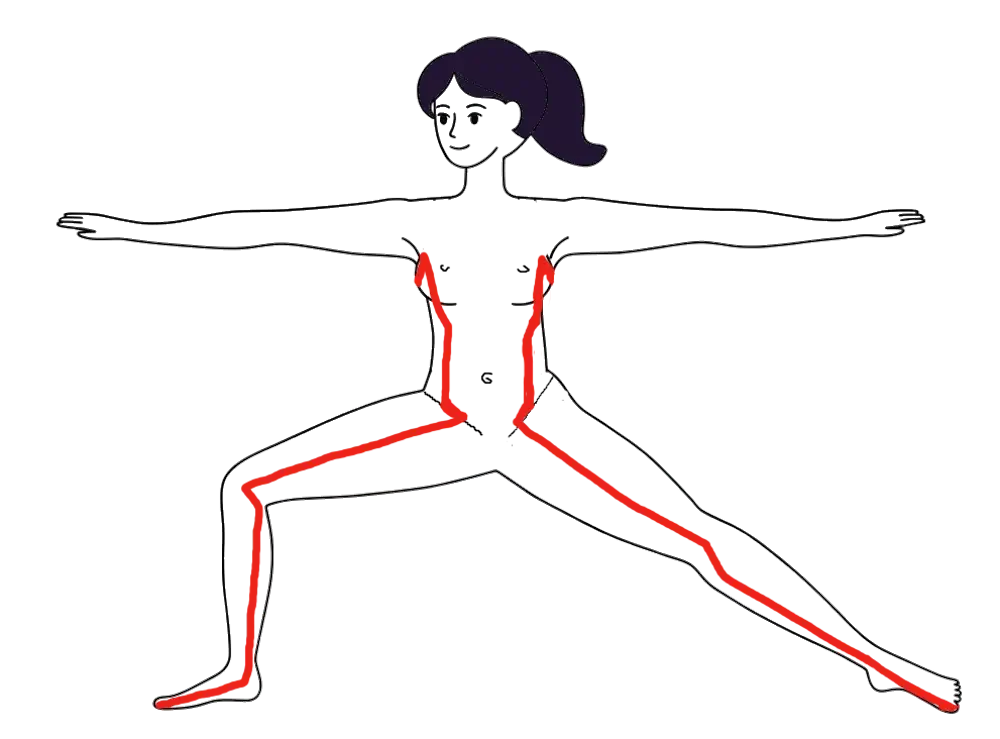SP - Spleen Meridian
足太阴脾经 - Zú Tàiyīn Píjīng
The Spleen Meridian serves as the body's central processing system for both physical nourishment and mental clarity. As the "Minister of Agriculture," it transforms the food we eat into the vital substances that sustain life - Qi and blood. This meridian is fundamentally concerned with our ability to extract what we need from our environment and distribute it effectively throughout our system.
Beyond physical digestion, the Spleen governs our mental digestion - our ability to process thoughts, concentrate, and maintain mental stability. It's intimately connected to our sense of groundedness, our relationship with nourishment, and our capacity to feel satisfied and supported. When the Spleen is strong, we feel centered, well-nourished, and mentally clear.
Meridian Pathway & Flow
Direction
Flows from foot to chest, Yin to Yang
Pathway
- Origin: Begins at SP-1 (Yinbai) on the medial corner of the big toe
- Foot Path: Travels along the medial border of the foot to the ankle
- Leg Ascent: Rises along the medial aspect of the lower leg, behind the tibia
- Thigh Path: Continues up the medial thigh to the abdomen
- Abdominal Path: Enters the spleen and stomach, then disperses through the chest
- End Point: Terminates at SP-21 (Dabao) on the lateral chest
- Connection: Links to the Heart meridian at HT-1 (Jiquan) in the armpit
Active Time
9:00 AM - 11:00 AM (Peak energy circulation)

Primary Functions
Physical Functions
- Governs digestion and nutrient absorption
- Transforms food into Qi and blood
- Controls blood circulation within vessels
- Supports muscle tone and limb strength
- Regulates fluid metabolism
- Maintains organ position, preventing prolapse
Emotional & Mental Functions
- Governs thinking and concentration
- Supports mental stability and groundedness
- Manages worry and overthinking
- Controls our relationship with nourishment
- Maintains emotional equilibrium
- Supports capacity for satisfaction and contentment
Essential Acupoints
Select a point to learn about its location, primary functions, clinical applications, and protocols.
Therapeutic Applications
Digestive Conditions
- Poor appetite and digestive weakness
- Bloating and abdominal distention
- Loose stools and diarrhea
- Nausea and vomiting
- Food sensitivities and malabsorption
- Gastric and duodenal issues
Blood & Circulation Issues
- Chronic fatigue and low energy
- Easy bruising and bleeding
- Heavy menstrual bleeding
- Blood sugar irregularities
- Poor circulation in extremities
Mental & Emotional Patterns
- Excessive worry and overthinking
- Poor concentration and mental fog
- Obsessive thoughts about food or body
- Feeling unsupported or undernourished
- Mental fatigue and inability to focus
- Eating disorders and unhealthy food relationships
Physical Structural Issues
- Muscle weakness and poor tone
- Organ prolapse
- Varicose veins
- Edema and fluid retention
- Heavy limbs and physical lethargy
SP Protocols
Morning Digestive Support (5-10 minutes)
- Begin at 9-11 AM (peak spleen time) or before meals
- Start with SP-3 (Taibai) with gentle circular massage to awaken digestion
- Apply pressure to SP-6 (Sanyinjiao) for overall digestive and reproductive health
- Apply pressure to SP-9 (Yinlingquan) for fluid balance
- End with SP-21 (Dabao) for overall integration and chest opening
Digestive Relief Sequence (3-5 minutes)
- For bloating, poor appetite, or digestive upset
- Focus on SP-3 and SP-6 with sustained, warming pressure
- Add SP-4 (Gongsun) for stomach harmony
- Massage in clockwise direction to support digestion
Mental Clarity & Grounding (10 minutes)
- For overthinking, worry, or mental fatigue
- Hold SP-1 (Yinbai) to ground scattered energy
- Apply pressure to SP-3 for mental stability and earth connection
- Apply sustained pressure to SP-6 while focusing on breath
- End with gentle massage of SP-21 to integrate body-mind connection
Energy Building Routine (10-15 minutes)
- For chronic fatigue or blood deficiency
- Begin with warming massage of SP-6 (master point for blood)
- Apply pressure to SP-10 (Xuehai) for blood nourishment
- Apply pressure to SP-9 for transforming dampness
- End with SP-3 to strengthen foundational energy
All SP Points
Select a point to learn about its location, primary functions, clinical applications, and protocols.
Considerations
Late Summer Focus
- The spleen meridian is most active in late summer - increase practice during humid, transitional weather
- Late summer is optimal for supporting Spleen health.
Dietary Support
- Yellow/orange foods (sweet potato, squash, millet) and warm, cooked foods support spleen health
- Avoid cold or raw foods and excessive dairy, which can burden spleen function
Meal Timing
- Honor the 9-11 AM peak time with a substantial, warm breakfast
- Avoid eating when worried or stressed
Exercise
- Gentle, grounding exercises like walking, tai chi, or yoga support spleen function
- Avoid excessive exercise which can deplete spleen energy
Mental Health
- Practice mindfulness and limit overthinking
- Create supportive, nourishing environments
Rest
- Adequate rest is essential - spleen deficiency often involves chronic exhaustion
Precautions
Pressure
- Use gentle to moderate pressure - spleen meridian responds better to nurturing touch
- SP-6 requires careful attention as it can be sensitive
Timing
- Work on spleen meridian when feeling grounded and centered
- Avoid intense spleen work when highly emotional or stressed
Digestive Concerns
- For severe digestive issues, work with healthcare providers
- Chronic bloating or pain requires proper medical evaluation
Blood Sugar
- Monitor blood sugar levels if diabetic when working intensively with spleen points
Pregnancy
- SP-6 is contraindicated during pregnancy as it can stimulate uterine contractions
- Other spleen points are generally safe but consult a qualified practitioner
Mental Health
- Spleen work can bring up issues around nourishment and self-care
- Be prepared to address relationship with food and body
Chronic Conditions
- Spleen deficiency often underlies chronic fatigue, autoimmune conditions, and digestive disorders
- Consistent, gentle practice over time is more effective than intense sessions